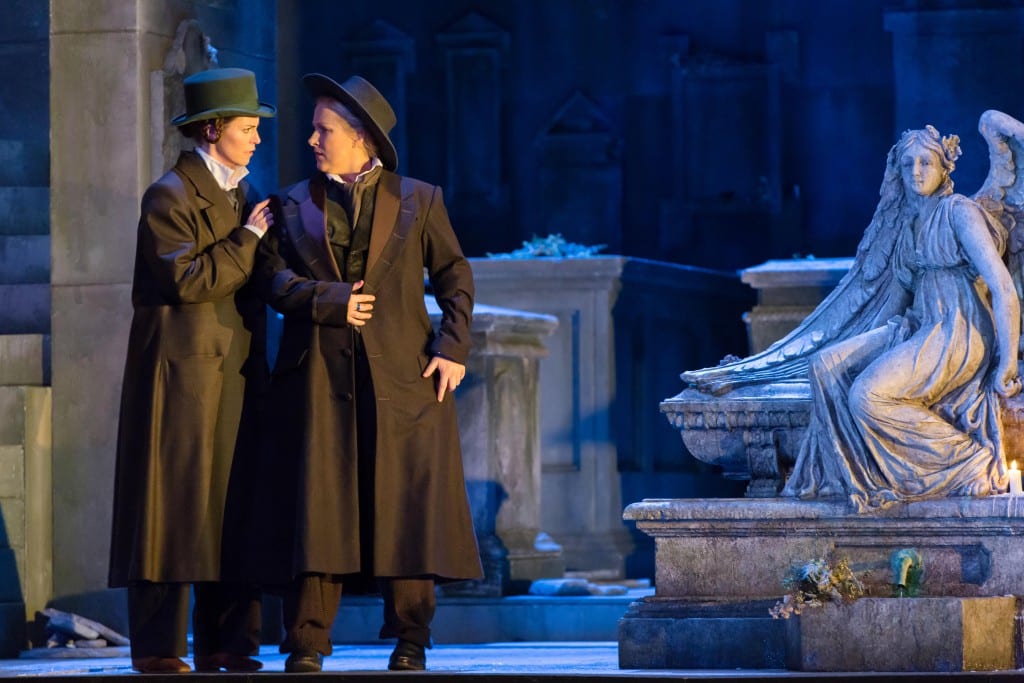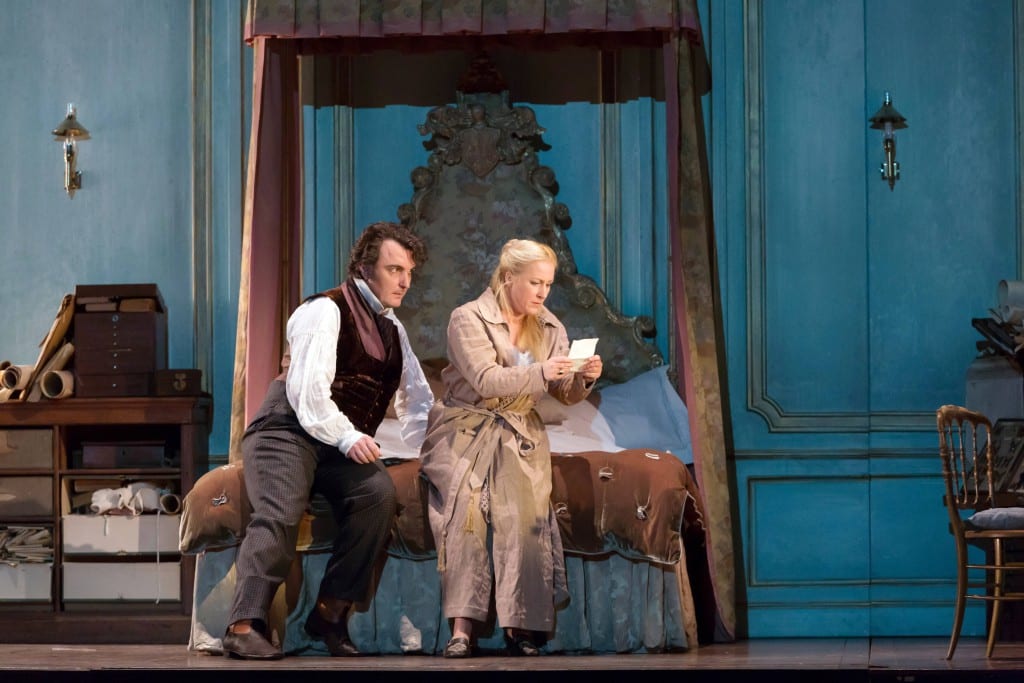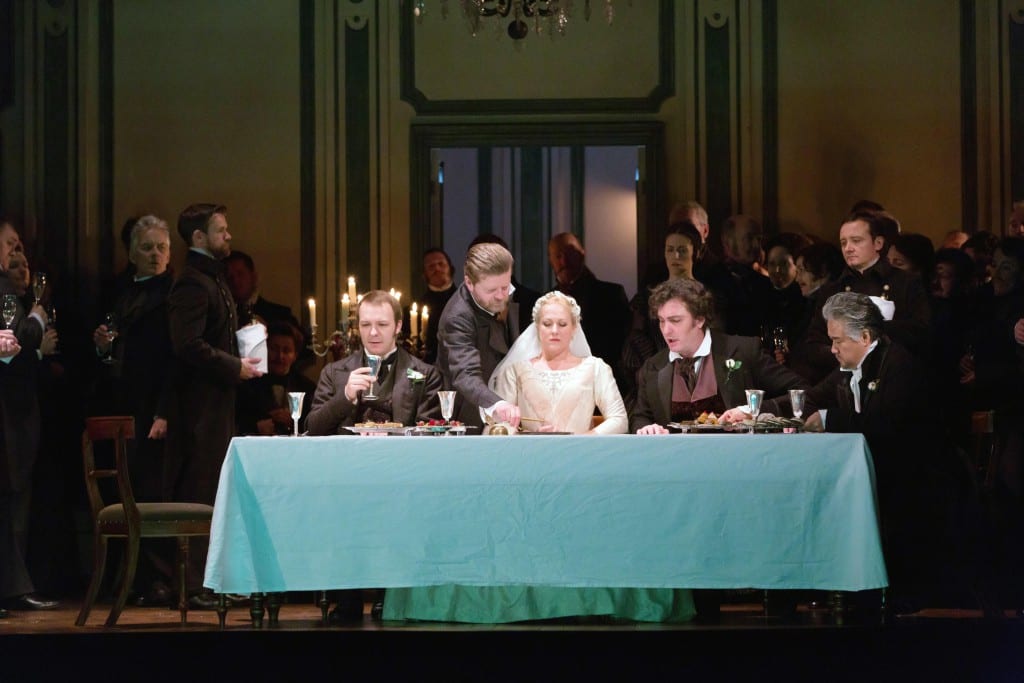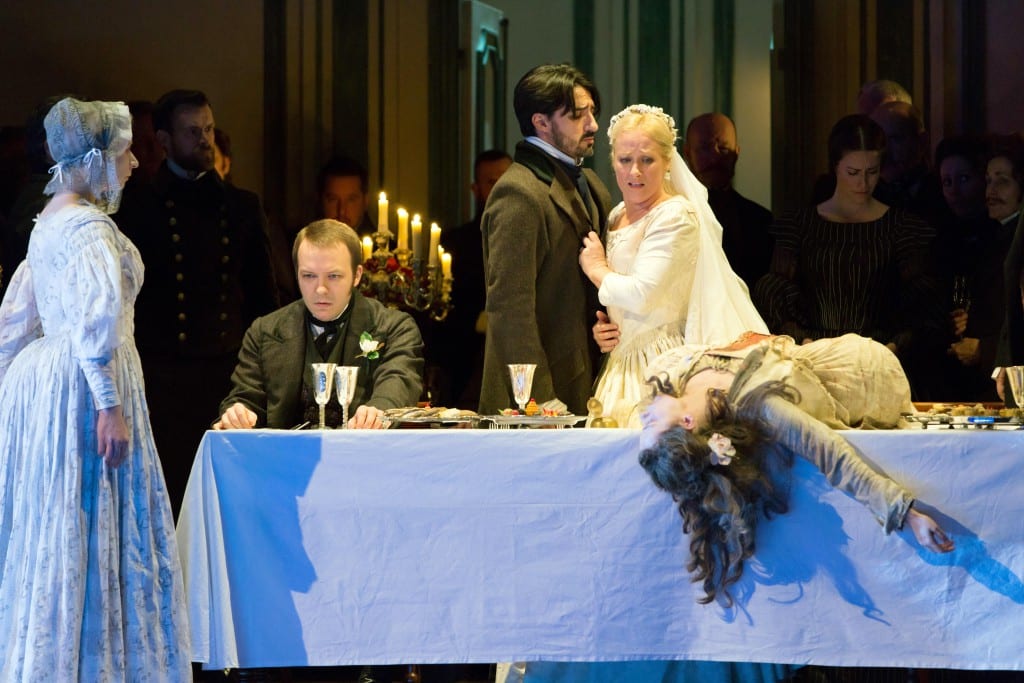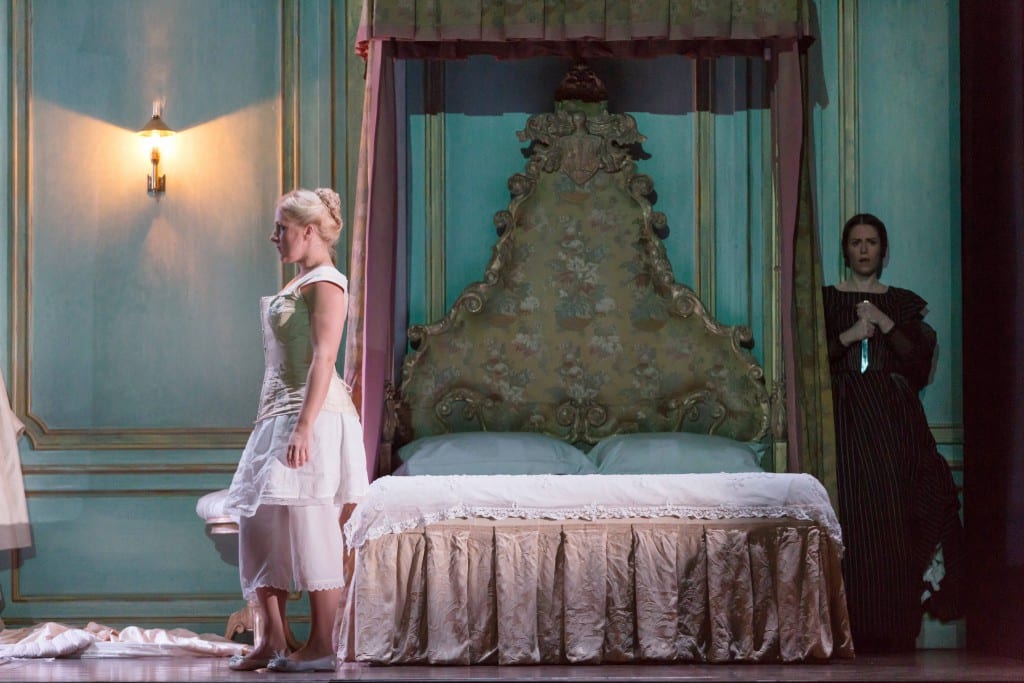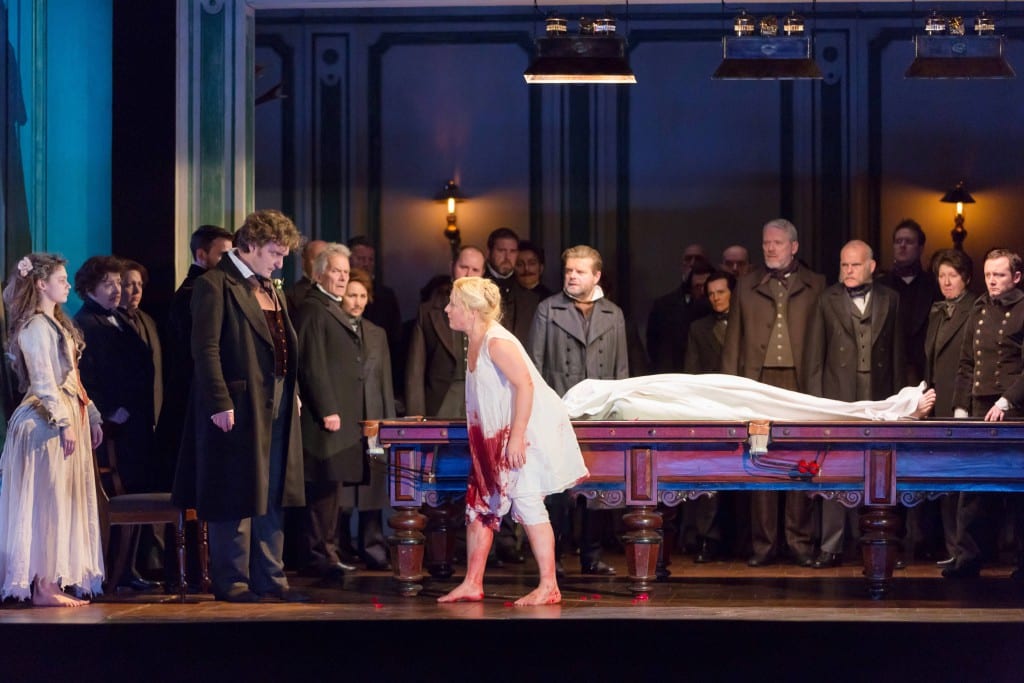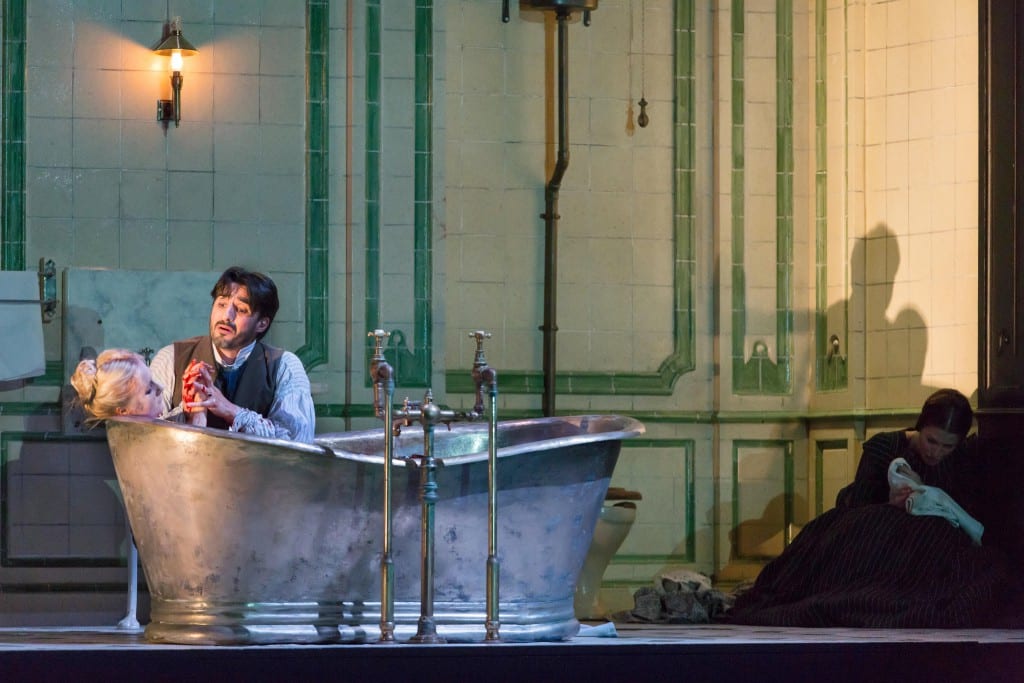Passionate love, sex, murder and suicide are unleashed on stage in Katie Mitchell’s production of Gaetano Donizetti’s 1835 three acts tragic opera Lucia di Lammermoor.
Salvadore Cammerano’s libretto is loosely based on Walter Scott’s novel ‘The Bride of Lammermoor’. Here, as in Romeo and Juliet, the love story is overshadowed by the lovers’ family feud. Lucia Ashton, superbly sung and performed by Diana Damrau and Sir Edgardo of Ravenswood (Charles Castronovo) sworn enemy of her brother Lord Enrico Ashton (Ludovic Tézier), are passionately in love with each other. Edgardo appears at their secret meeting place before announcing his need to travel to Paris. The lovers waste no time to get undressed and make love to the throbbing notes of the music at the end of Act I, exchange vows and rings. The love duet of Lucia and Lord Edgardo at the end of Act I delivers passion, drama and defiance. Lucia seems clear as to is to be her husband.
Enrico is facing a financial ruin unless his sister Lucia marries Lord Arturo Bucklaw. Deception and intimidation get Lucia to the altar and to sign the marriage contract to Lord Arturo Bucklaw, knowing she is carrying Edgardo’s child. Again, this is a controversial gloss on the original, more chaste nineteenth century libretto, but one that seems justified for engaging the attention of a modern audience. As Lucia signs the marriage contract, Edgardo appears. What follows is near inevitable in an opera – murder, madness and suicide.
Mitchell’s direction introduces new scenes to the opera by dividing the stage into two independent spaces; one explores the libretto’s narrative and the other partly mirrors events that precede and illuminate the main narrative. Lucia and her companion, Alisa (Rachael Lloyd) dress up in her brother’s clothes, not to be detected when going to a rendezvous with Edgardo. This theatrical element like many others enriches the theatrical performance and most importantly, empowers Lucia, the woman. We don’t just hear what men report of Lucia’s actions, we also witness her powerful performance devoid of sentimentality. This Lucia is not mad but driven to desperation. Her meditated and cruel murder of her husband, Arturo is executed on the forestage where Lucia also suffers a miscarriage. Damrau is a superb actor and a consummate vocalist. She turns ‘Il dolce suono’ (The Sweet Sound) known as the ‘mad scene’ into an eerie yet sorrowful aria. The aria, accompanied, as intended by Donizetti, by glass harmonica and not a flute as is usual in other productions, enhancing the sense of eeriness of the tragedy and the tale. Mitchell adds two ghosts that of the young girl murdered by Edgardo’s father and that of Lucia’s mother – to hover in the two spaces. That is a bit of overkill, perhaps, yet it offers more female roles to the production and helps one see the story from a feminist point of view.
Daniel Oren’s brilliant and emotionally apt conducting of the Covent Garden orchestra helps to unfold the story through the considerable power of Donzietti’s harmonious melodies; seamless support is given to the vocalists.
This is a fascinating and absorbing production despite the liberty Mitchell takes with the additional scenes, which do not affect the music, but ride on it. Having said that it is just right that the readers should know that on press night’s curtain call, Mitchell’s bow invoked invoke loud boos and moderate cheers from the full to capacity auditorium of over 2, 250 people. So, that audience was sharply divided over this production, but the conductor and singers were duly cheered for their stunning contribution and performance of a great work of music theatre.

